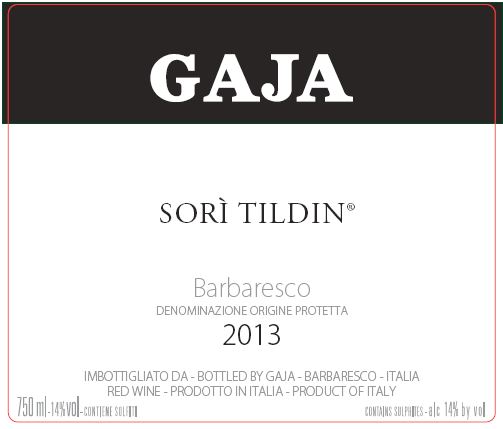2013 Barbaresco Red Blend
Gaja Sori Tildin, a remarkable red blend from the esteemed Barbaresco region, showcases a deep crimson hue that tantalizes the eye. The 2013 vintage has matured beautifully, offering a captivating aroma profile laden with ripe dark fruits, spices, and subtle earthy undertones. On the palate, this full-bodied wine presents a harmonious balance of high acidity that invigorates the senses, while the tannins are notable and structured, lending a firm backbone to the wine's complexity. The fruit intensity is prominent, delivering layers of black cherry, plum, and hints of tobacco, all culminating in a mouthwatering finish. This wine is a true representation of the Barbaresco terroir, with its elegance and finesse making it a standout choice for both special occasions and a delightful pairing with rich dishes.
Gaja Sori Tildin, a remarkable red blend from the esteemed Barbaresco region, showcases a deep crimson hue that tantalizes the eye. The 2013 vintage has matured beautifully, offering a captivating aroma profile laden with ripe dark fruits, spices, and subtle earthy undertones. On the palate, this full-bodied wine presents a harmonious balance of high acidity that invigorates the senses, while the tannins are notable and structured, lending a firm backbone to the wine's complexity. The fruit intensity is prominent, delivering layers of black cherry, plum, and hints of tobacco, all culminating in a mouthwatering finish. This wine is a true representation of the Barbaresco terroir, with its elegance and finesse making it a standout choice for both special occasions and a delightful pairing with rich dishes.




